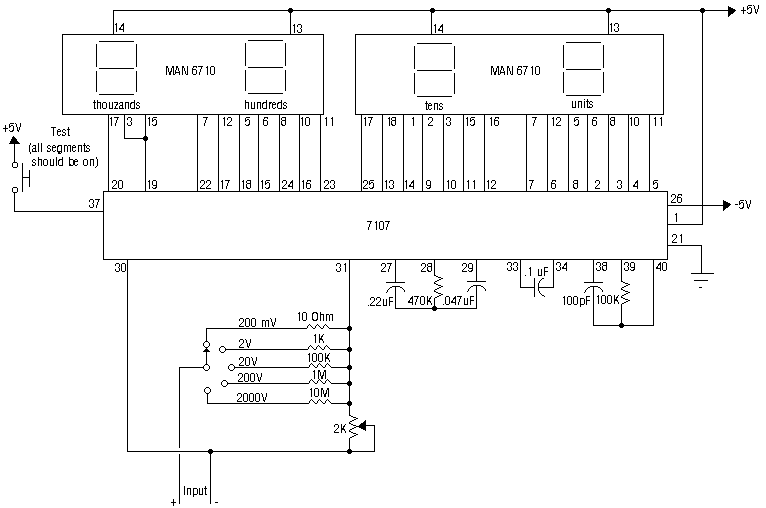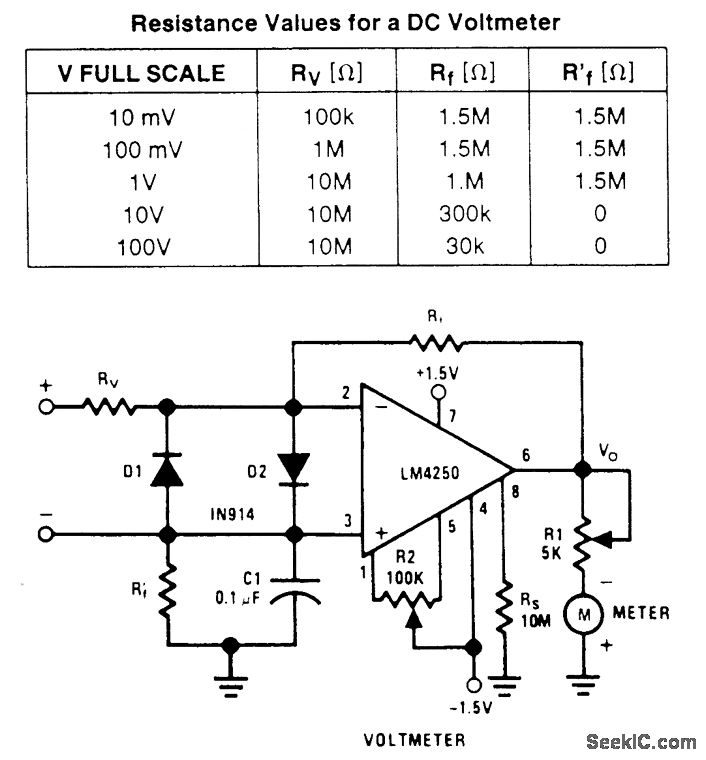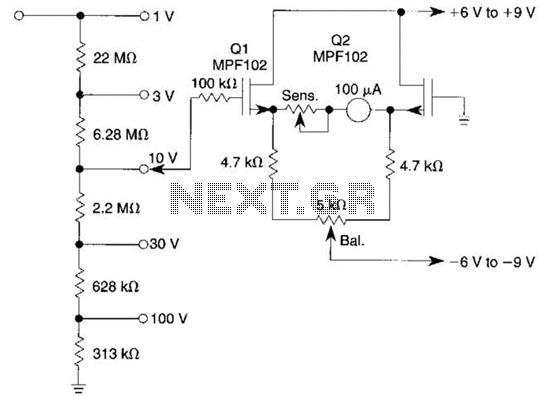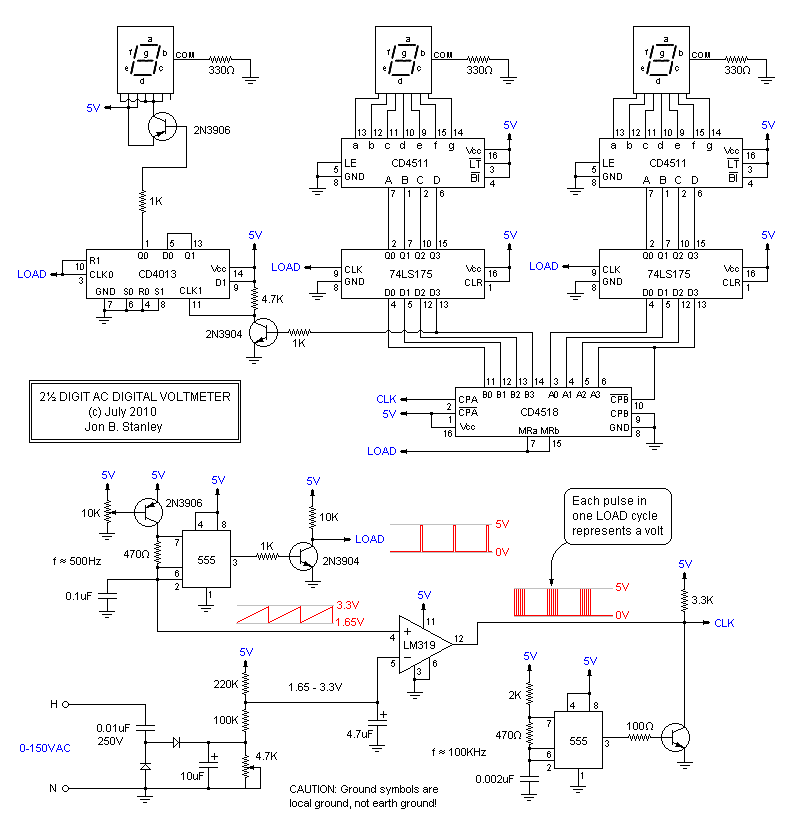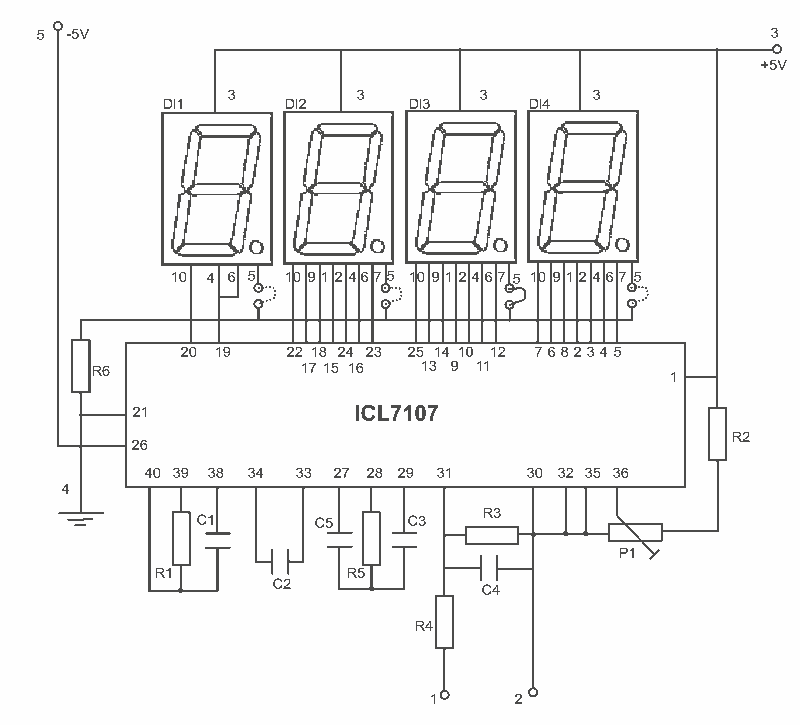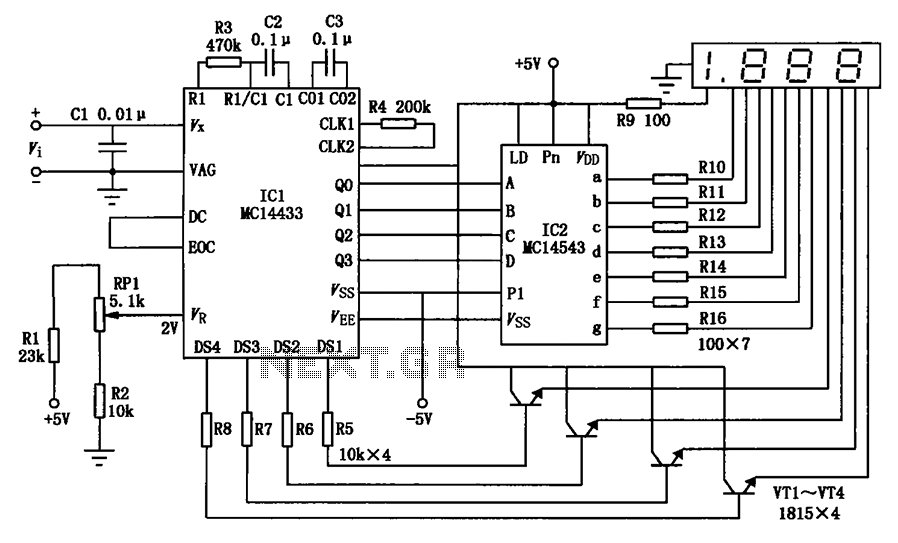
FETVM-FET Voltmeter
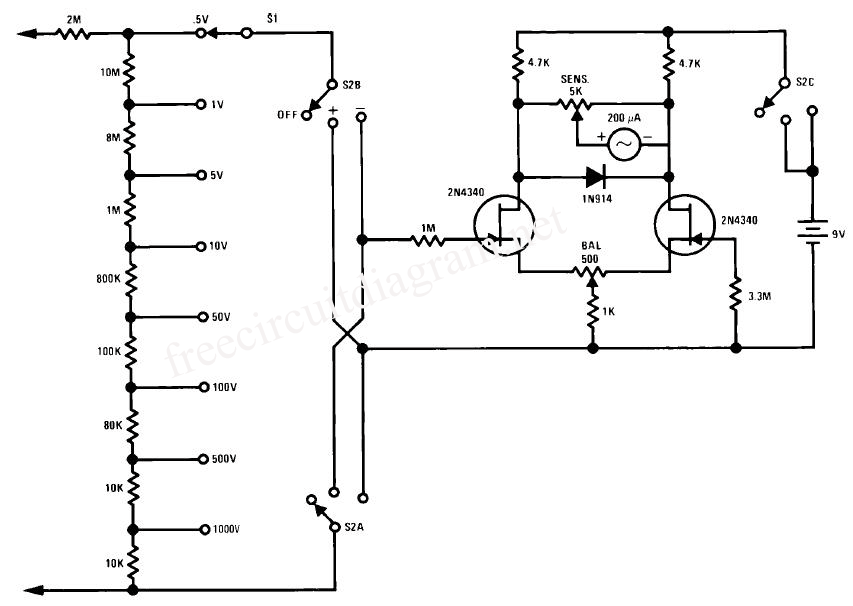
This circuit is a series-FET Voltmeter known as FETVM. The FETVM is designed to replace the function of a vacuum tube voltmeter (VTVM) while simultaneously providing a means to clean the appliance cord. Additionally, the drift rate of this circuit is significantly better than that of a vacuum tube circuit, allowing for a full-scale range of 0.5 volts, which is the most practical range achievable with vacuum tubes. The low-leakage, low-noise 2N4340 transistor is an ideal component for this application.
The FETVM circuit utilizes a field-effect transistor (FET) configuration to achieve high input impedance and low noise performance, characteristics that are essential for accurate voltage measurements in sensitive electronic applications. The design incorporates a series configuration of FETs, which enhances the overall stability and accuracy of the voltage readings.
In this circuit, the 2N4340 FET plays a critical role due to its low leakage current and noise characteristics, making it suitable for precise voltage measurements. The FET is configured in such a way that it minimizes the loading effect on the circuit under test, ensuring that the measurement does not alter the voltage being measured.
The circuit also includes a cleaning mechanism for the appliance cord, which may involve a simple resistor-capacitor (RC) network that filters out high-frequency noise and provides a stable DC voltage output. This feature enhances the usability of the FETVM in practical applications, as it combines measurement and maintenance functionality into a single device.
Furthermore, the design of the FETVM allows for a compact and lightweight construction, making it suitable for portable applications. The use of solid-state components instead of vacuum tubes contributes to the durability and reliability of the device, as it is less susceptible to environmental factors such as temperature and humidity.
Overall, the series-FET Voltmeter represents a significant advancement over traditional VTVMs, providing improved performance, versatility, and ease of use in electronic measurement tasks.This circuit is a series-FET Voltmeter FETVM. This FETVM to replace VTVM function while at the same time line used to clean the appliance cord. In addition, the rate of drift is far superior to vacuum tube circuit allows full-scale range of 0.5 volts is the most practical with vacuum tubes. Low-leakage, low noise 2N4340 is an ideal device for this application. 🔗 External reference
The FETVM circuit utilizes a field-effect transistor (FET) configuration to achieve high input impedance and low noise performance, characteristics that are essential for accurate voltage measurements in sensitive electronic applications. The design incorporates a series configuration of FETs, which enhances the overall stability and accuracy of the voltage readings.
In this circuit, the 2N4340 FET plays a critical role due to its low leakage current and noise characteristics, making it suitable for precise voltage measurements. The FET is configured in such a way that it minimizes the loading effect on the circuit under test, ensuring that the measurement does not alter the voltage being measured.
The circuit also includes a cleaning mechanism for the appliance cord, which may involve a simple resistor-capacitor (RC) network that filters out high-frequency noise and provides a stable DC voltage output. This feature enhances the usability of the FETVM in practical applications, as it combines measurement and maintenance functionality into a single device.
Furthermore, the design of the FETVM allows for a compact and lightweight construction, making it suitable for portable applications. The use of solid-state components instead of vacuum tubes contributes to the durability and reliability of the device, as it is less susceptible to environmental factors such as temperature and humidity.
Overall, the series-FET Voltmeter represents a significant advancement over traditional VTVMs, providing improved performance, versatility, and ease of use in electronic measurement tasks.This circuit is a series-FET Voltmeter FETVM. This FETVM to replace VTVM function while at the same time line used to clean the appliance cord. In addition, the rate of drift is far superior to vacuum tube circuit allows full-scale range of 0.5 volts is the most practical with vacuum tubes. Low-leakage, low noise 2N4340 is an ideal device for this application. 🔗 External reference
